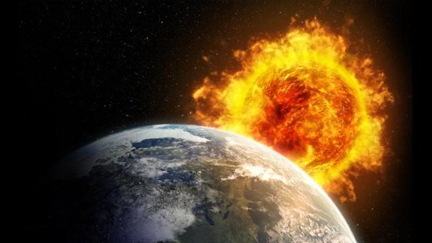Climate Veritas (truth) is dedicated to return the debate about the earth's climate to a science based discussion and away from the current propaganda that continues to promote theories about greenhouse gas effects that have never been proven. We are living in a time reminiscent of the 17th century when Galileo was declared a heretic and placed under house arrest for the rest of his life because he declared that the earth revolved around the sun. Today, you can be canceled if you question the dogma that greenhouse gases due to fossil fuel burning will destroy the planet. It has happened to many scientists.

The Galileo probe orbited Jupiter for almost eight years, and made close passes by
all its major moons. Its camera and nine other instruments sent back
reports that allowed scientists to determine, among other things, that
Jupiter’s icy moon Europa probably has a subsurface ocean with more
water than the total amount found on Earth.
Contemporary climate science and IPCC Assessment Reports do not discuss global temperature sensitivities to changes in cloud albedo, absorbed solar radiation or total surface atmospheric pressure. Consequently, no equations have been derived/proposed thus far to calculate these sensitivities. The reason for such an omission is the implicit assumption made by the IPCC, based on the 19th-Century Greenhouse theory (Svante Arrhenius1896), that the observed warming during most of the 20th Century and especially over the past 40 years was chiefly caused by an increase of industrial CO2 emissions, which are believed to trap outgoing long-wave radiation in the Earth’s troposphere and reduce the rate of surface infraredcooling to Space.
The genesis of the modern myth that human consumption of fossil fuels generates excess CO2 in the atmosphere that overheat the planet was in 1961 when astronomer Carl Sagan declared that Venus, whose atmosphere is 96% CO2, was a victim of “a runaway greenhouse gas (GHG) effect”. This claim was made with virtually no scientific evidence except that the Venusian atmosphere was 96% CO2 and very hot. Venus is very hot because its atmosphere is very heavy. Three scientists, John Tyndall (1861), Svante Arrhenius (1896), and Edward Hulbert (1931) made assumptions that CO2 could warm more with the same solar radiation than other gases hence it was a greenhouse gas capable of warming the atmosphere more than other gases. No warming of the earth was attributed to atmospheric pressure and solar radiation.
Debates in the Stockholm Physics Society concerning the causes of the ice ages led Arrhenius to construct the first climate model of theinfluence of atmospheric carbon dioxide (CO2), published in The Philosophical Magazine in 1896. The general rule that emerged from the model was that if the quantity of CO2 increases or decreases in geometric progression, temperature will increase or decrease nearly in arithmetic progression. Linking the calculations of his abstract model to natural processes, Arrhenius estimated the effect of the burning of fossil fuels as a source of atmospheric CO2. He predicted that a doubling of CO2 due to fossil fuel burning alone would take 500 years and lead to temperature increases of 3 to 4°C (about 5 to 7°F). This is probably what has earned Arrhenius his present reputation as the first to have provided a model for the effect of industrial activity on global warming.
But this model has never been subjected to experimental verification with real world data and is the basis for all of the climate models that the IPCC supports. In fact, if the temperature of the earth was controlled by a greenhouse gas effect, there would be no lapse rate in the temperature due to altitude. It's a well known fact that temperature decreases as you go up a mountain. This is due to the adiabatic compression of the earth's atmosphere due to Earth's gravity, which causes the heating of our atmosphere. Mount Kilimanjaro is near the equator in Africa but the top of the mountain is covered in snow and ice throughout the year. The claims that Kilimanjaro is losing its snow due to burning of fossil fuels is wrong because the warming of the earth is controlled by changes in the albedo.
Personnel
Ned Nikolov
Dr. Ned Nikolov is a physical scientist with the US Forest Service
specializing in the development of fire-weather and climate
applications to support wild-land fire management. Dr. Nikolov has a PhD in Ecological Modeling, Colorado State University. He is currently responsible for developing methods for projecting the effects of climate change on fire danger and wildland-fire activity in the USA for the US Forest service. He co-authored New Insights on the Physical Nature of the Atmospheric
Greenhouse Effect Deduced from an Empirical Planetary Temperature Model with Dr. Karl Zeller along with many other papers on climate change.

Darwin Throne
Mr Throne has over thirty years’ of business experience at Hewlett-Packard and several small businesses that he founded. He was co-founder of Handar one of the largest meteorological data collection companies in the world using the GOES satellite. He also developed atomic frequency standards at Hewlett-Packard. He is co-inventor of an innovative technology for microwave counters. He has MSEE and MS Physics degrees from the University of Minnesota.

